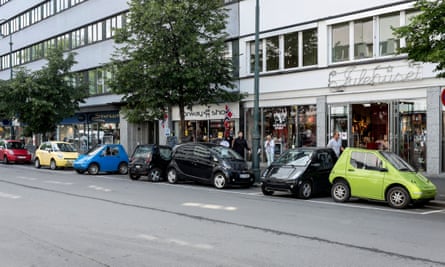Last month’s devastating report by the Intergovernmental Panel on Climate Change (IPCC) warns that the world is failing to respond strongly enough to the growing climate crisis. But a new book offers some desperately needed hope that we can speed up efforts to avoid disaster.
Simon Sharpe’s Five Times Faster outlines a radical but realistic plan for scaling up cuts in global emissions of greenhouse gases so that we reach net zero by 2050 and avoid a rise in global temperature of more than 1.5C.
He starts from the insight that although annual global emissions of greenhouse gases have been rising over the past two decades, this increase has been at a slower rate than the growth in the size of the global economy. Hence the world’s economy has become less emissions intensive, by about 1.5% a year, because of the expansion of renewable power, electric vehicles and energy efficiency.
However, if the world is to reach net zero emissions by mid-century, we need the decline in emissions intensity to be about 8% a year, five times faster than today. In short, as the global economy grows and energy use increases, we need to replace fossil fuels with cleaner alternatives at a much faster pace.
Unlike many authors who tout fixes, Sharpe has witnessed first-hand the painfully slow negotiations between countries at the annual United Nations summits in his role as a civil servant in the UK government’s climate and energy departments.
Drawing on his experience as director of economics for the UN Climate Champions team, which works with cities, companies and communities to support action by governments, he has produced a searing analysis of the main obstacles to faster progress, and concludes that many scientists, economists and diplomats have been as unhelpful as fossil fuel lobbyists.
Sharpe describes his exasperation with climate scientists who are partial in their assessments of the potential impacts, including only what they are sure that we are facing. Many of the worst risks are uncertain and so have been omitted from the reports, leaving politicians unaware of the scale of the risk.
Among the examples he cites is a paper warning that many parts of the world will become essentially uninhabitable as high temperature and humidity mean that human beings are unable to lose sufficient heat through sweating. It was left out of a key climate assessment because scientists had low confidence in the paper’s findings.
Sharpe suggests that a remedy for scientists’ professional conservatism would be for governments to ask experts in risk assessment who study the global dangers of other types of disasters, such as pandemics, to answer the question: “What is the worst that could happen?”
He reserves his strongest criticisms for economists who have used unrealistic models that assume that the worldwide supply and demand of goods and services is like a machine operating in an equilibrium. He argues, persuasively, that these models systematically underestimate the economic damage that climate impacts have on lives and livelihoods, and overestimate the cost of cutting global emissions by replacing fossil fuels as the primary source of our energy.
Sharpe draws attention to new research and analysis that treats the economy as an ecosystem, recognising that there are tipping points in the supply of, and demand for, zero-carbon technologies when they become cheaper than fossil fuel incumbents. This leads him to the conclusion that international climate diplomacy should no longer focus on agreeing economy-wide emissions targets – the main aim for the past three decades.
Sharpe highlights how quickly coal has been phased out from the UK power system by the addition of a modest tax on carbon emissions, shrinking from about 40% of electricity generation in 2012 to less than 1% in 2020.
Similarly, Norway has stimulated sales of electric cars 10 ten times faster than other countries by using taxes and subsidies to make them cheaper than vehicles equipped with internal combustion engines.

New technologies are expensive to produce at first, but as manufacturers learn to make them more efficiently over time, and in large numbers, the costs fall.
In the UK, the cost of building an offshore wind turbine has dropped dramatically as developers have learned how to build them more quickly on top of the sea bed and in larger windfarms. And once battery technology advances to make electric vehicles as cheap and reliable as those fuelled by petrol and diesel, they will very quickly dominate new car sales. The progress in car battery technology will also bring forward the day when power grids can store enough electricity to deal with the intermittent generation of solar and wind.
Sharpe is optimistic about the potential for a new approach to climate diplomacy because he oversaw promising campaigns on key technologies at the COP26 climate change summit in Glasgow in 2021. But he is also realistic enough to acknowledge that it requires a degree of collaboration between governments that can be difficult to build in a world of heightened geopolitical tensions.
If a little technical in places, Five Times Faster is based on robust analysis and succeeds in treading the fine line between optimism and realism. If you’re serious about tackling the climate crisis, make time to read it.
Bob Ward is policy and communications director at the Grantham Research Institute on Climate Change and the Environment at the London School of Economics and Political Science.











